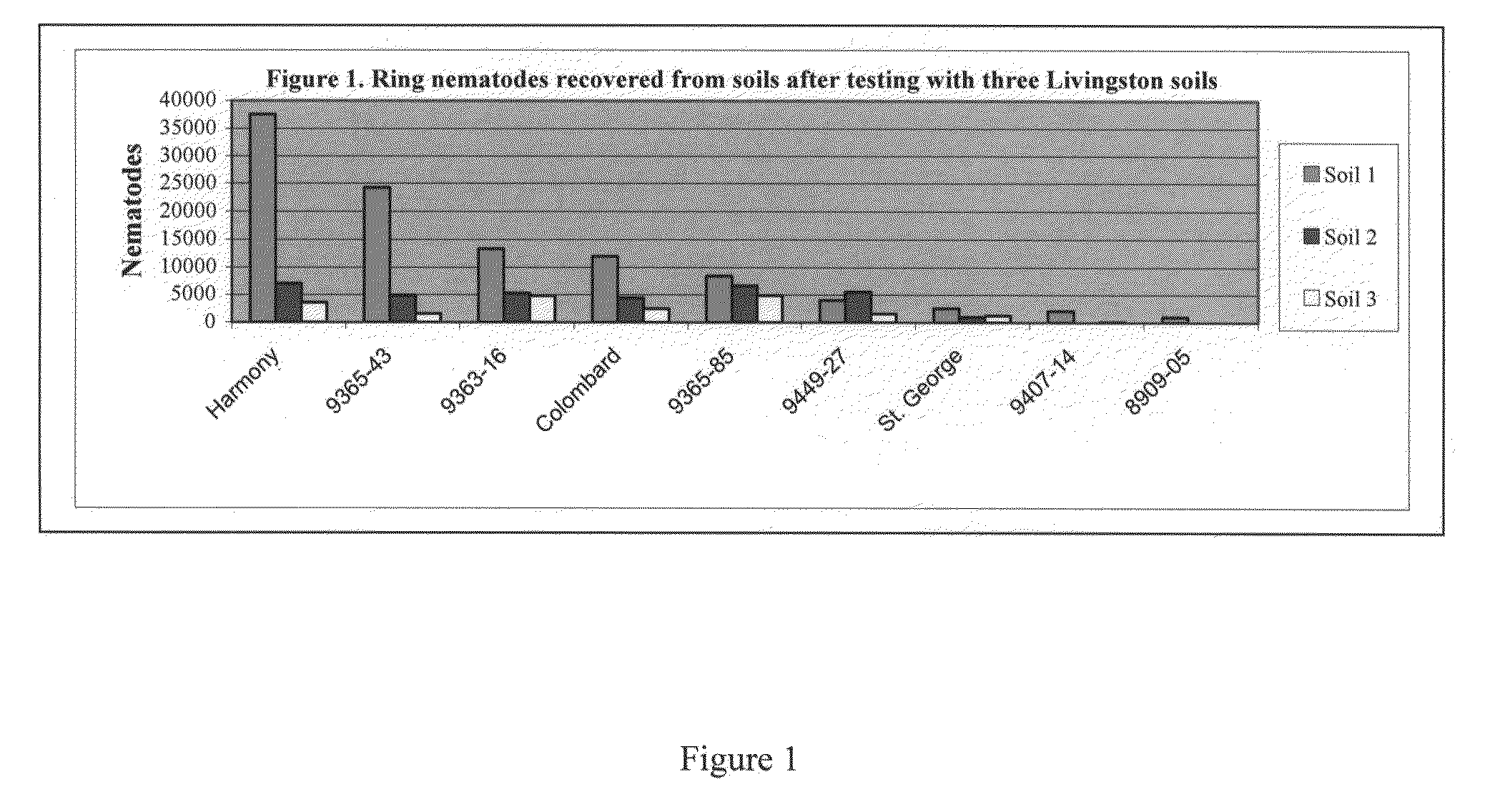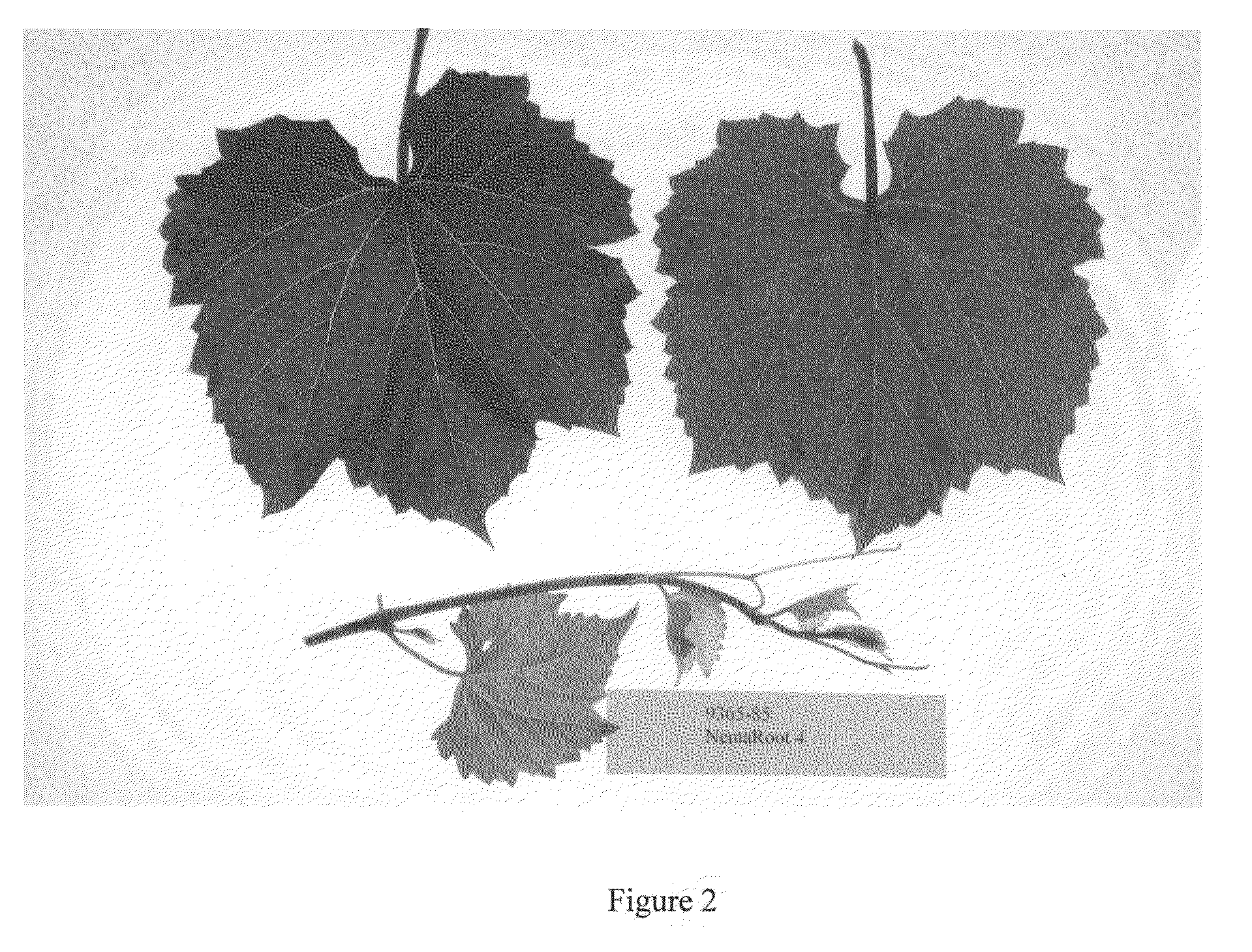Nematode resistant grapevine rootstock plant 9365-85
a technology of grapevine rootstock and nematode, which is applied in the field of nematode resistant grapevine rootstock plant, can solve the problems of large restrictions on the use of soil-borne pesticides, inability to meet the needs of plant products, and inability to meet the needs of plant products, and achieves strong resistance to grape phylloxera.
- Summary
- Abstract
- Description
- Claims
- Application Information
AI Technical Summary
Benefits of technology
Problems solved by technology
Method used
Image
Examples
Embodiment Construction
[0007]A breeding program was initiated in 1990 at Davis, Calif., to provide a group of rootstocks with broad and durable resistance to the nematodes found in California vineyards. This program commenced with an evaluation of selections that remained from breeding efforts in the late 1960s and early 1970s. These selections from the late 1960s and early 1970s were previously screened against two root knot nematode species (Meloidogyne incognita acrita and M. arenaria thamsei), the lesion nematode (Pratylenchus vulnus), and the dagger nematode (Xiphinema index). In 1990, these selections were evaluated for their ability to root and for growth habits such as brushy growth, internode length and the degree of lateral shoot production. In 1993 and 1994, the best of these selections were crossed to species chosen for their ability to reduce scion vigor or improve the rooting of the progeny. The parentage and species composition of the ‘8905-05’ and other crosses are listed in Table 1. About...
PUM
 Login to View More
Login to View More Abstract
Description
Claims
Application Information
 Login to View More
Login to View More - R&D
- Intellectual Property
- Life Sciences
- Materials
- Tech Scout
- Unparalleled Data Quality
- Higher Quality Content
- 60% Fewer Hallucinations
Browse by: Latest US Patents, China's latest patents, Technical Efficacy Thesaurus, Application Domain, Technology Topic, Popular Technical Reports.
© 2025 PatSnap. All rights reserved.Legal|Privacy policy|Modern Slavery Act Transparency Statement|Sitemap|About US| Contact US: help@patsnap.com


